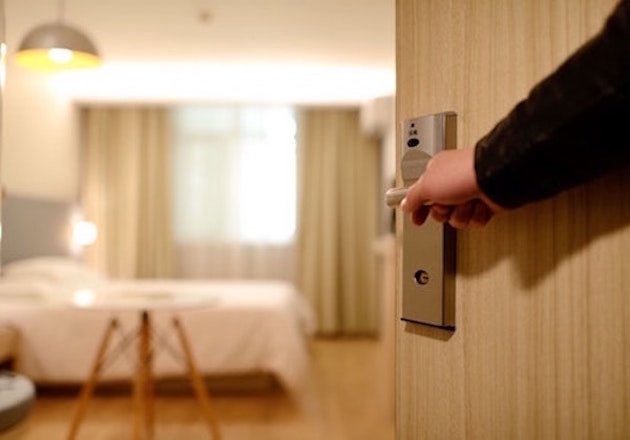Being a landlord can be tough. You have to always be prepared for whatever tenant comes your way. After a thorough tenant screening process, a good majority of tenants will be quiet, clean, and polite, chances are, at some point, you might encounter a complex tenant.
And you probably already know that if you don’t handle them properly, you could find yourself in trouble. These are some of the most common tenant infractions:
- Late payments. Leases typically require that rent payments be made within a certain time frame. Usually, it’s three to five days. Anything later than this can be a legally justified reason to evict a tenant.
- Disorderly conduct. Nuisance or sloppy upkeep can quickly lower your property’s value. It could also cause other tenants to move out.
- Security deposit mishaps. Security deposits are a common source of friction between landlords and tenants. Tenants often believe they can pay their last month’s rent with it.
- Violation of rules. Although relatively trivial, rules are still rules. For example, a tenant keeping a pet when there’s a no pet policy, leaving the mailbox unattended for too long, or taking out the recycling cans before a certain time.
To avoid these common issues, landlords should:
- Have a lease that’s rock-solid
- Conduct proper tenant screening and avoid discrimination
- Deal with complaints in a timely manner
- Know the different uses of notices
- Make the rent payment process convenient for tenants
- Always give proper notice prior to entering a unit
- Know when to withhold the security deposit
- Communicate with tenants consistently
On a daily basis, a landlord has more than just these issues to deal with. But knowing how to deal with them will help guarantee a smooth resolution.
The first step to remedy these issues begins with a notice.
In this post, we’ll take a look at the 10 different notice types and how to use them.
The 10 Types of Notices for Every Landlord
Different actions require different legal documents. Landlords may require notices for various reasons, for example: to evict tenants, to raise the rent or to enter a rental unit. Landlords also need to serve the right type of notice. Failure to do this can lead to unnecessary delays or additional costs.
State laws vary in this regard. So, it’s important for landlords to understand what their local laws are. The following are the different types of notices available to landlords.
1. Notice to Pay or Quit.

One of the major pitfalls for a landlord is renting to tenants who fail to pay rent. The Notice to Pay Rent or Quit demands two things: make the rent payment or the tenant moves out.
With this form, you’re legally notifying the tenant that if the violation isn’t remedied within a set amount of time, they will receive an eviction notice warning.
Different states have different laws regarding the eviction process for the reason of unpaid rent. You can, in some states, initiate the process of eviction straight away. In other states, however, you must send a Notice to Pay or Quit first.
This notice doesn’t give you permission to cut off utilities or change locks. This is illegal and is referred to as “constructive eviction”. Needless to say, you can only kick tenants out through the formal eviction process.
And even then, it’s only the county sheriff who’s legally mandated to carry out the eviction.
2. Unconditional Quit Notice
Unlike other notices, an Unconditional Quit Notice doesn’t have an option to remedy a violation. The tenant has to leave. Period. This is regardless of whether they fix the violation or not.
It’s the written equivalent of saying “Get out now!”.
The following are instances when an Unconditional Quit Notice can be served by a landlord:
- The tenant has repeatedly violated a lease term.
- The tenant was involved in a criminal activity on the premises, such as dealing drugs.
- The tenant has repeatedly failed to pay rent on time.
- The tenant has caused serious damage that can’t be repaired.
Not all states allow its use though. This is because it’s considered the harshest of all the notices. And even those that do allow it often impose strict conditions.
3. Notice to Cure or Quit
This notice informs the tenant that a certain behavior must be ceased within a certain period of time or else they face an eviction. Unlike the Unconditional Quit Notice, this notice gives the tenant the option of fixing the violation or moving out.
You can then evict the tenant if they fail to resolve the violation within the time specified. In most cases, the common lease violations are:
- Keeping pets when the lease is against it.
- Subletting the rental unit or having unapproved roommates.
- Using the property in a manner that is prohibited by a lease.
The tenant can continue staying on the property so long as the violation is fixed.
4. Lease Renewal Letter

This is used when you must decide whether to renew the lease or not. Sending the tenant a lease renewal letter is a courteous way to ensure continued implementation of the lease.
This notice informs the tenant that their existing lease is set to expire within one to three months. Giving tenants adequate time to evaluate whether they want to continue their lease or not.
5. Non-Renewal of Lease Letter
You may need to make a decision to send a Non-Renewal of Lease letter to a tenant. The letter is needed if you want to terminate a periodic lease.
You should check with your state to see how much time you need to give for a notice of non-renewal. Unlike some other types of notices, you don’t need a legal reason to end the contract. It is for this reason that it’s also referred to as a “no-cause eviction”.
You should use this notice if you have a lease that automatically renews and you’d rather it not.
6. Notice of Change of Ownership To Tenant
Change is inevitable, but can also be worrying. Tenants can feel a range of emotions when there are changes in the ownership or management of a rental property.
The law requires that you notify tenants if there is a change in ownership or management. When ownership is officially switched over, the former landlord should then tell tenants who their new landlord is.
It’s important to note that a lease doesn’t automatically terminate upon the sale of a property.
7. Notice of Maintenance, Renovations, Repairs, and Outages

One main duty of a landlord is to conduct repairs on the rental unit. Furthermore, they’re legally required to give prior notice of their intentions to enter a rental unit. Emergencies are the only exception.
Most states usually require you to provide one or two days’ advance notice before entering a rental unit.
Also, a landlord needs to adhere to habitable housing rules. A habitable property is one that’s structurally sound and clean. It also should have electricity, water, and adequate heating.
Be sure to check with your state about habitable housing laws. Sometimes they even vary from city to city.
If you think the repairs could take longer, you could consider relocating the tenants to a hotel (at your expense) until completion of the repairs
8. Notice of Intent to Dispose of Personal Property That’s Abandoned
Each state is diverse in terms of how landlords should deal with a tenant’s abandoned personal property. Most states require that you send the tenant a letter first before disposing of their property.
Colorado is the only state that doesn’t require landlords to store abandoned property. Washington, Virginia, and Connecticut are the only states that allow landlords to place tenant’s abandoned property on public property.
Nebraska, Maine, Florida, and California have a monetary threshold which property may be disposed of. Check with your state regulations regarding this.
9. Notice of Intent to Enter Dwelling Unit

If you’re planning on entering the rental premises, most states require you to provide a written notice of intent to your tenant. This means that you still need to give notice even if you just want to walk around the backyard.
You may only enter a tenant’s dwelling unit in the following circumstances:
- When the tenant consents to the entry. The tenant should also be present at the time of your entry.
- Entry pursuant to a court order.
- During an emergency.
- The tenant has either surrendered or abandoned the premises.
- To make previously agreed upon repairs.
- To make an inspection.
- To show the rental unit to prospective buyers.
Moreover, you cannot use your right of entry to harass the tenant. The entry should also be during normal business hours.
The notice should state the approximate time, date and reason for entry.
10. Notice of Rent Increase
Raising the rent is a tricky business. Raise it too high, and you risk losing your renters. Don’t raise it all, and you risk leaving money on the table.
You can only increase rent if the tenancy agreement allows it. Otherwise, the tenant can sue you. You must also give the right notice as well as meet specific requirements. You must consider such things as market rents, a notice period, and type of tenancy.
Generally speaking, you must give a written notice of at least 30 days of your intent to increase rent.
You can only increase rent after two months of the tenancy and before two months of the previous increase
However, there are instances where both you and your tenant may also agree to increase the rent on your own. But this can only be possible if you have:
- Changed the tenancy agreement in favor of the tenant.
- Improved services or facilities provided to the tenant.
- Improved the property’s value that’s beneficial to the tenant.
How to Serve Notices to a Tenant

Knowing how to serve the right notice is a must know for each and every landlord. The service must be absolutely correct. There’s little or no room for error. Here’s how to serve the letter to a tenant:
-
Through personal service
When serving a notice personally to the tenant, it’s important to get their signature. Otherwise, the tenant may deny receiving it in the hopes of delaying the process. Preferably, you should have a witness.
-
Through a professional server
The principal job of a process server is to deliver legal documents to a defendant involved in a court case.
-
Posting
Serving notices by posting must be in a conspicuous manner. “Conspicuous” means that anyone should be able to walk up and read it. The preferred method of posting is by taping it to the front door. This helps avoid complaints by tenants. For example, the notice blew away, was posted on the wrong door, or was taken down by kids.
-
Mailing
A regular first-class mail is a must. For example, “Certificate of Mailing” or “Proof of Mailing.” It is a service provided by the U.S. Postal Service that provides proof that you’ve mailed documents to a specific person.
-
Serving the Notice to Another Person at the Rental Unit
You may still give the notice to another person living in the rental unit so long as that person is of suitable age and discretion is present. The person must be dependable, mature, and preferably a member of the family. When serving the notice, make sure to take the photo of the signing or get their signature and mail a copy to the tenant.
Recommended List of Vendors for Legal Notices
The notices provided by these vendors vary greatly by price, but at least they’ll get you started. The vendors are as follows:
- EZ Landlord Forms
- US Legal Forms
- Nolo
- Rocket Lawyer
- Legal Zoom
Please take note that we are not affiliated with these sites whatsoever!
Serving the right notice is very important. It helps prevent unnecessary delays and additional costs to landlords. Hopefully, this article has taught you everything you need to know about the different types of notices and their uses.



